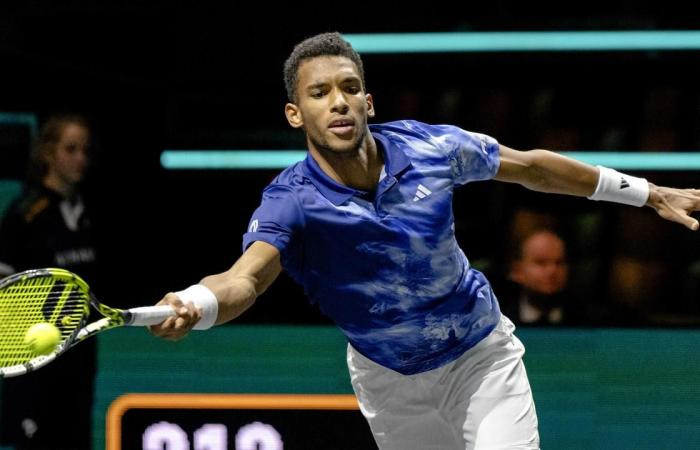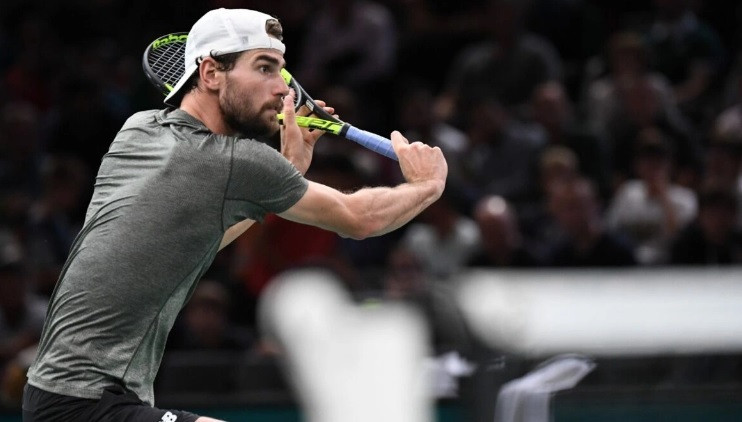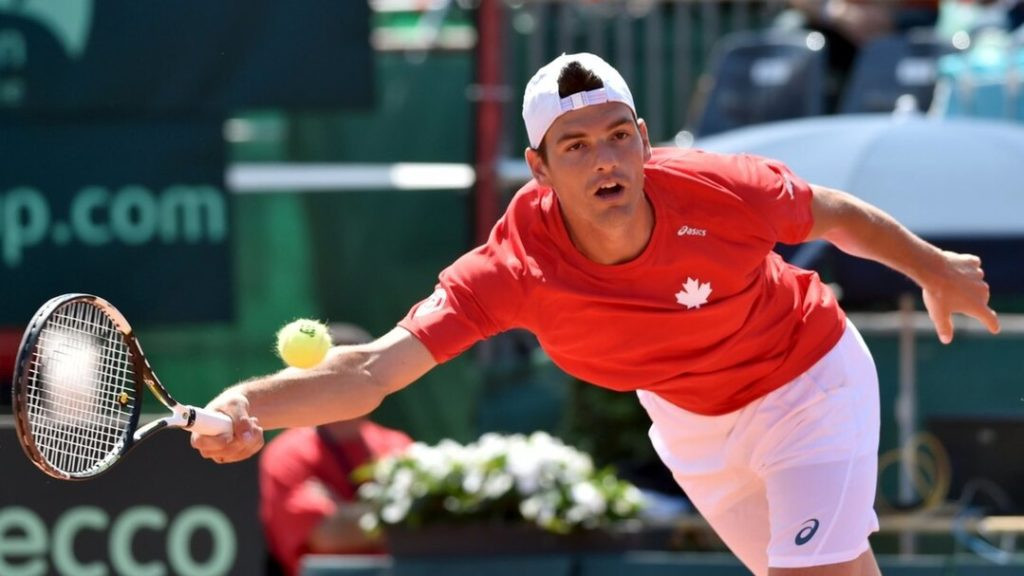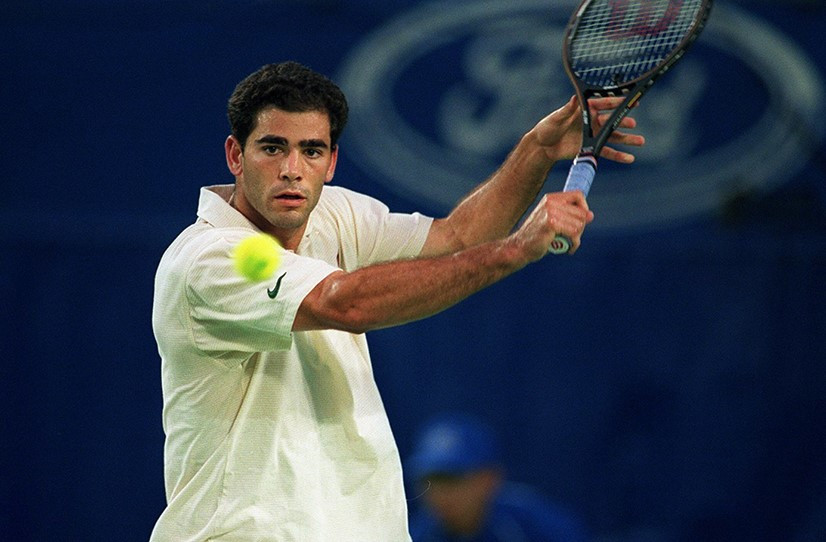In the dynamic world of men’s tennis, recognizing player archetypes is usually straightforward. We know who to back in grueling baseline exchanges and who dominates at the net. But what about the Serve And Volley? This once-prominent tactic now seems like a relic of a bygone era, leaving many tennis enthusiasts puzzled when it’s mentioned.
The serve-and-volley style, characterized by a player serving and then swiftly moving towards the net to finish the point with a volley, is a rarely seen strategy in contemporary tennis. With the exception of a few players, most notably Maxime Cressy, it’s a style that has largely faded from prominence. While seemingly simple, the serve and volley is a high-risk, high-reward approach that can backfire if not executed perfectly.
A well-placed serve can certainly put the returner on the defensive, making them too preoccupied with the ball to notice the server’s net rush. However, against elite returners like Novak Djokovic, an imperfect serve can be ruthlessly punished with a blistering return.
Let’s delve into recent examples to understand the nuances of serve and volley in modern tennis.
Félix’s Rotterdam Experiment
On February 17th, Félix Auger-Aliassime, known for his baseline prowess, found himself in a challenging situation defending his indoor title in Rotterdam. Surprisingly, in his initial service games, Auger-Aliassime employed serve and volley on approximately half of his service points – a stark deviation from his usual game.
 Felix Auger-Aliassime at the net during the Rotterdam tournament
Felix Auger-Aliassime at the net during the Rotterdam tournament
Commentators noted this tactical shift as a clever strategy against Daniil Medvedev, a player renowned for his deep return position, often standing far behind the baseline. Serve and volley allowed Félix to exploit Medvedev’s deep positioning by angling his serve and quickly reaching the net. This approach aimed to capitalize on the element of surprise and reduce the angles for Medvedev’s return.
This tactic initially proved effective. However, Medvedev, with his exceptional return skills, soon adapted, delivering returns with pinpoint accuracy. This adjustment seemed to unsettle Auger-Aliassime, potentially eroding his confidence and leading to missed opportunities. Ultimately, Auger-Aliassime’s title defense ended abruptly in straight sets (6-2, 6-4) after just 83 minutes.
 Felix Auger-Aliassime volleying at the net in Rotterdam
Felix Auger-Aliassime volleying at the net in Rotterdam
Despite the loss, Auger-Aliassime demonstrated competent volleying skills. His net play and mid-court game were arguably strong. Had his serve consistently set up easier volleys and had he persevered with the tactic, the outcome might have been different.
Maxime Cressy: The Modern Serve-and-Volley Standard-Bearer
Watching Auger-Aliassime’s brief foray into serve and volley, one immediately thinks of Maxime Cressy, who has emerged as the leading proponent of this classic style. Cressy’s unwavering commitment to serve and volley was evident in his Wimbledon match against Auger-Aliassime. Powered by 28 aces and relentless net attacks, Cressy defeated Auger-Aliassime in four sets (6-7(5), 6-4, 7-6(9), 7-6(5)).
 Maxime Cressy at Wimbledon
Maxime Cressy at Wimbledon
Cressy, originally from France but now representing the United States, has become synonymous with the serve-and-volley approach. Reportedly, the French Tennis Federation discouraged him from pursuing this style, leading to his switch to representing the U.S.
Novak Djokovic, after defeating Cressy at the Paris Masters, acknowledged the uniqueness of Cressy’s game. Djokovic remarked, “It takes courage to play this kind of style that’s almost an ancient style. You don’t have many players that do that. Possibly he’s the only one at the top. It does change a lot because not only do you have to get the return back but you have to put it under his feet, which is very difficult to do.”
Djokovic further commented on the entertainment value of serve and volley, adding, “It’s nice to see someone that comes in after the first and second serve. It just gives a different look from the tennis fans’ point of view. I appreciate that. I respect that.”
While Cressy’s serve-and-volley style is undeniably captivating and offers a refreshing change of pace, its effectiveness remains a subject of debate. For every match where Cressy accumulates a high number of aces, his double fault count can also be significant. In 2022, he averaged a notable 13 aces but also 8 double faults per match.
 Maxime Cressy at the Paris Masters 2022
Maxime Cressy at the Paris Masters 2022
Furthermore, despite frequent net approaches, Cressy’s volleying strategy doesn’t always translate into match wins consistently, as opponents often find ways to neutralize his net game. After entering the Top 100 rankings, Cressy has maintained a ranking between No. 35 and No. 45, suggesting a level of success but also indicating limitations in consistently breaking into the very top tier of men’s tennis.
Frank Dancevic’s Expert Insight
Frank Dancevic, former Canadian player and Davis Cup captain, is a seasoned veteran who himself employed serve-and-volley tactics during his career.
 Frank Dancevic volleying
Frank Dancevic volleying
“Yes, I was a serve-and-volley type player. I wasn’t coming in on every single serve, but I was coming in quite a lot, on 70% or 80%,” Dancevic shared, offering a player’s perspective on the strategy.
However, Dancevic is skeptical about a widespread resurgence of serve and volley. “The game’s changed a lot in the past 15 years. Even myself, I changed my style to play a little bit more from the baseline,” he explained. “They’ve slowed the courts so much, so it’s better to be more solid from the baseline than at the net like before. Because before, the courts were quicker, so the balls were slipping more and it was tougher to return. The guys have more time to set up for the passing shot.”
 Frank Dancevic with Paul Rivard
Frank Dancevic with Paul Rivard
Dancevic argues that court standardization has significantly impacted playing styles. He believes that the homogenization of court speeds, making even clay courts faster and grass courts slower compared to the past, has diminished the effectiveness of serve and volley. “Modern tennis is being aggressive from the baseline but realizing your opportunities and knowing how to finish points at the net,” he summarized, highlighting the current dominant approach.
Dancevic points out the rarity of pure serve-and-volley specialists achieving top rankings in recent times, mentioning Pierre-Hugues Herbert as one of the few exceptions. He recalls facing very few serve-and-volleyers during his career, citing Michael Llodra, Tim Henman, Pat Rafter, and, of course, the legendary Pete Sampras as notable examples from the past.
 Pete Sampras at the net
Pete Sampras at the net
Despite the challenges, Dancevic leaves a glimmer of hope, concluding, “But you never know. If someone is very good at it, we could see a champion. But there won’t be a lot of them,” suggesting that while rare, exceptional serve-and-volley players could still emerge and succeed, even in the modern game.
In conclusion, serve and volley remains a captivating but increasingly niche tactic in men’s tennis. While players like Maxime Cressy keep the flame alive, the prevailing conditions of modern tennis, particularly slower court speeds and the high quality of baseline play and returning, present significant hurdles for a widespread resurgence of this classic style. The future of serve and volley may rest on the emergence of a truly exceptional player who can master and adapt it to the contemporary game.
